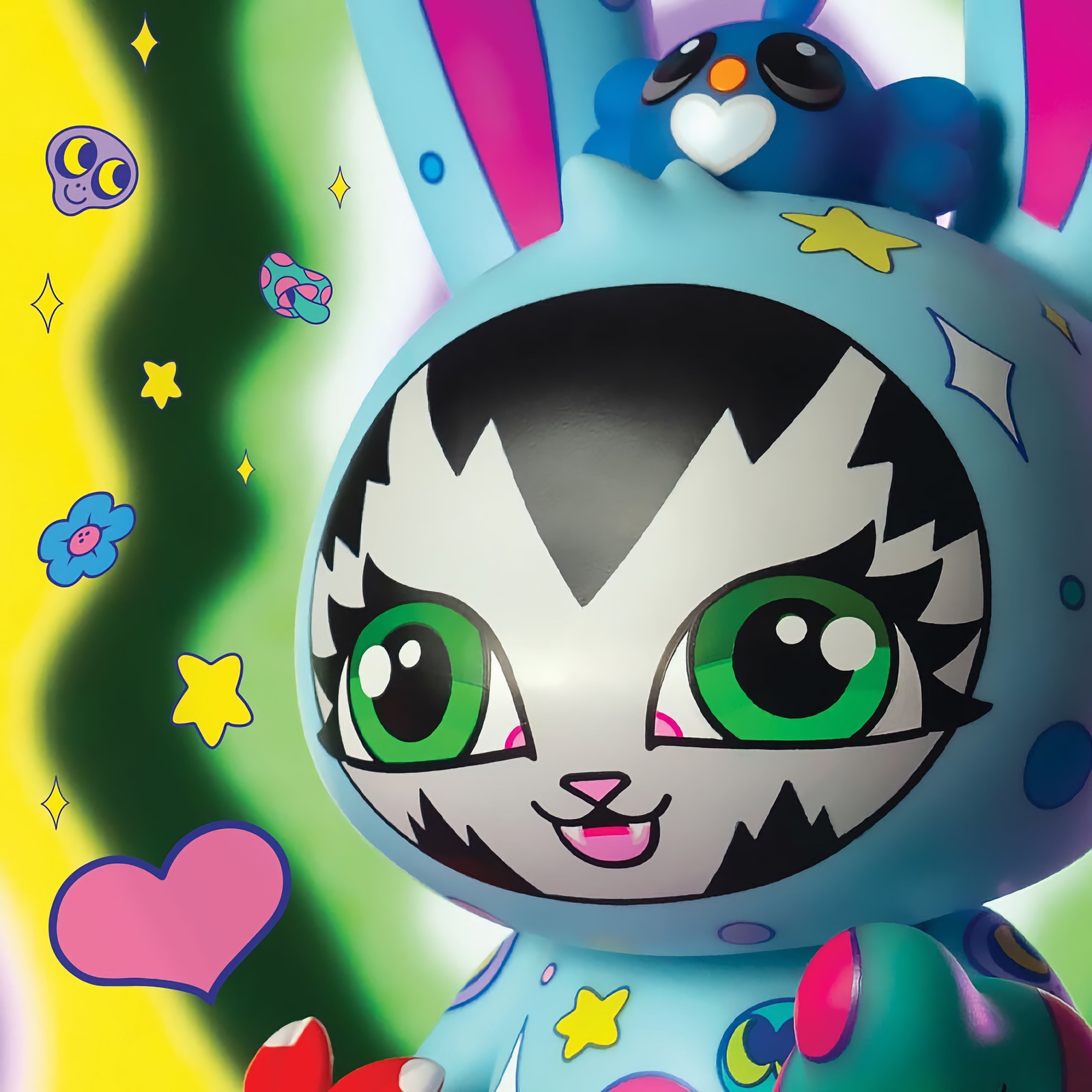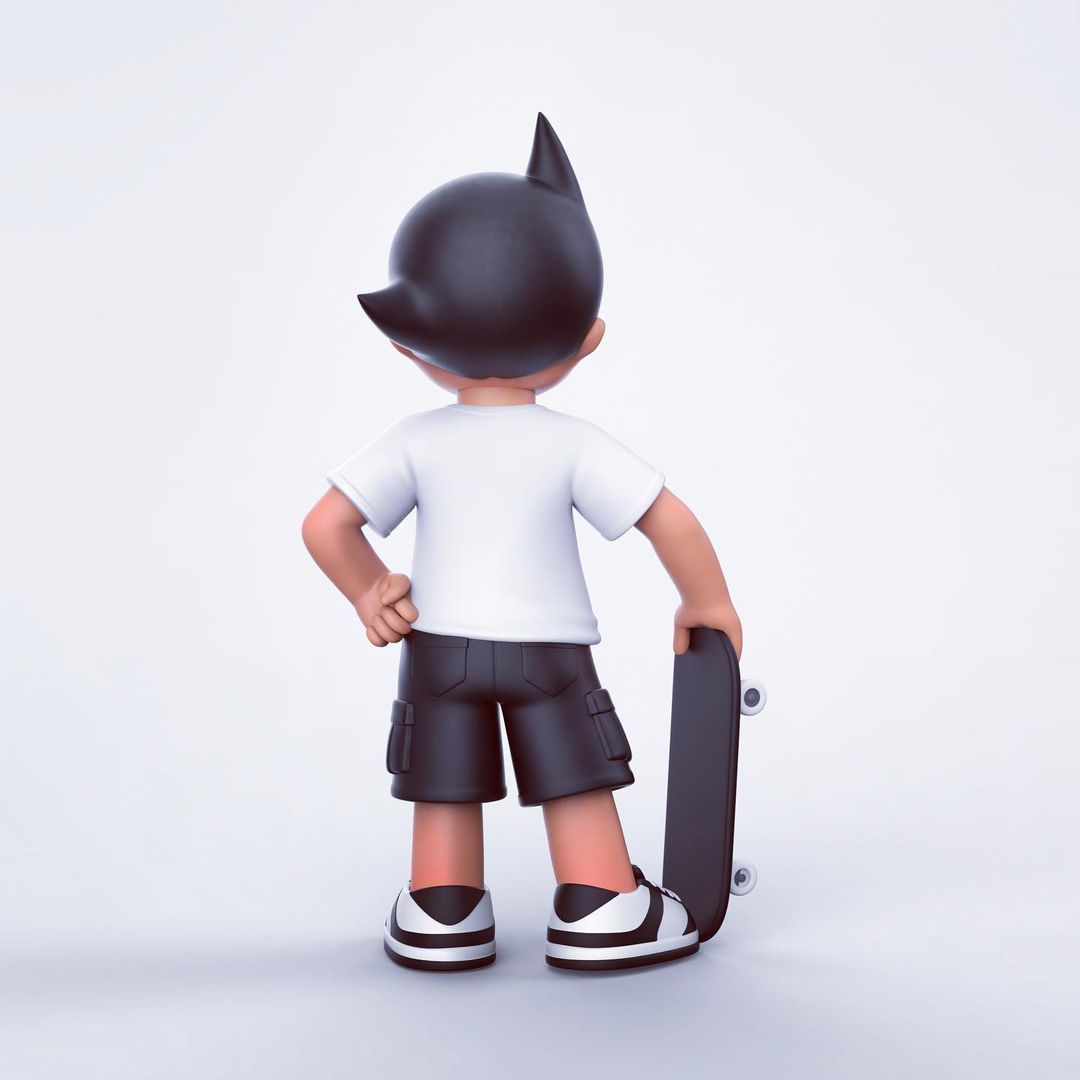[We recently had the pleasure of sitting down with Jamie Mathis, the owner and founder of Fully Visual, to talk about creating metal art figures. He also gave us an exclusive look at the newest Fully Visual project – Amanda Visell’s Apocalypt-Ephunt mini-fig set. Beyond taking a bunch of pics, we also shot a quick informal video intro (above) to the dope new metal mini-figs with the man himself in the new Switcheroo Workshop. Watch it for all the details, calm yourself, and then read the story behind Fully Visual to learn how a private label apparel designer added a new element to the art toy world.]
Q: How did you get started in metal ?
About ten years ago, I was designing apparel for a new company, Lucky Thirteen Apparel. I wanted to get into belt buckles. Since the price point for the mold making and sampling was pretty high, I started working for this guy who was doing belt buckles on his own. I worked with him and learned about sculpting and everything. As the years went on I got pretty close with him – kinda like a step dad deal.
I really got into doing the belt buckles and I ended up doing a private label line for Hot Topic for a few years. You know the brass knuckles, thorn n’roses – kinda like tattoo art. I’m not much of an artist except for tattoo type drawings, so it was really easy for me to turn my art into belt buckles.
I learned to work with metal through that experience.I really liked it a lot but eventually it wasn’t really playing my bills. I then got burned out and went back to my background in apparel design. I worked with a lot of artists like Rockin Jelly Bean, von franko, and Dirty Donnie – a lot of that low brow scene creating clothing.
More recently Paul Cruikshank, whom I met through punk rock collecting, needed help with production on Circus Punks which I did briefly. He pushed me towards doing more with metal. He was the one who focused me more on doing my own thing.
I had gone totally away from metal to focus on apparel. I didn’t event think about sculpting pieces with artists. I dealt with all the artists for clothing and circus punks, but it never crossed my mind to actually sculpt in metal until Cruikshank said “You should do stuff with the metal”. He knew that I had worked with metal. He was always pretty innovative – he lived in Fresno and up there you always have time to think about the lame things you can’t do but you want somebody else to do.
Q: Why didn’t you think of doing an artist line of metal figures earlier ?
I didn’t really realize how much the artists would be into doing metal. I didn’t think of metal as the hip thing when you’re dealing with big circus punks – stuff like that where there’s lots of color and such. I didn’t think it would take off the way it has with artists. Pretty much all the artists I work with are stoked on doing it.
I didn’t think that the figures would end up coming out as good as they have. I didn’t think the artists would appreciate all the work put into it. When you see all these crazy vinyl toys with all these insane colors and things going on, it’s hard to imagine figures in metal. These are sculpted out of metal, not wax or clay and then turned into metal. These are metal sculpts that are cast from metal sculptures.
Q: Why do you sculpt directly in metal?
There’s different types of casting. When you cast small figures that are really intricate, I use vulcanized molds – really hard rubber similar to that used on cars. The only way to make that mold is to take a really strong metal and sandwich it in-between two heavy pieces of rubber. It’s put into a machine that reaches 1300 degrees. Over 24 hours it slowly, slowly compresses itself around the metal. That’s the only way to get a really, really clean sculpt affordably. If I wasn’t doing this myself, it wouldn’t be feasible to do.
There’s lost wax casting and sand casting – but you can’t get the definition I get in the small figures. And then to move up you would have to use big injection molds that would be laser cut aluminum. That method is just not cost efficient to do the numbers that I want to do. I would like to stay away from the big numbers. I want to stay in the low 100, 150, 200 pieces.
Q: Going in were you pretty sure they were going to sell like hotcakes or were you apprehensive about it ?
In the very beginning I was torn a bunch of different ways. I had some people saying, do it in really small numbers as expensive pieces. Like do Joe Ledbetter’s figure with 25 pieces and sell it for $700 each and then move on to the next one. The idea being that I wouldn’t have to work as hard and deal with as much.
But I’m not a toy collector – I’m a Harley Davidson part collector and I get bummed out when there’s a part out there that I can’t get because it’s limited to say 5000 pieces – even though I really want it. I decided I would do a little bit more and charge a little bit less and give more to the collector market and not just to the collectors who can afford it. I don’t think that’s fair.
I knew right off the bat that if I made Gary Baseman’s Creamy and I made 25 ‘em and sold ‘em for 700, 800, 1000 dollars – they would sell. But then again, it’s not fair to a lot of people who are not going to be able to get it.
[We’d like to thank Jamie for taking the time to talk to us about the story behind Fully Visual. The company’s metal art are a new and welcome addition to art collectibles. If you haven’t watched the video clip at the beginning of this post…. we’ll just say go watch it… and if for some reason you can’t see it — Amanda Visell’s Apocalypt-Ephunt metal mini-fig series drops in multiple metal editions from Fully Visual this coming Monday (11.24). ]













